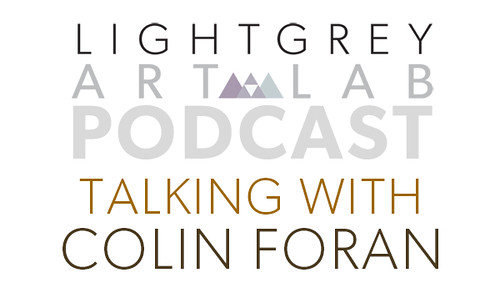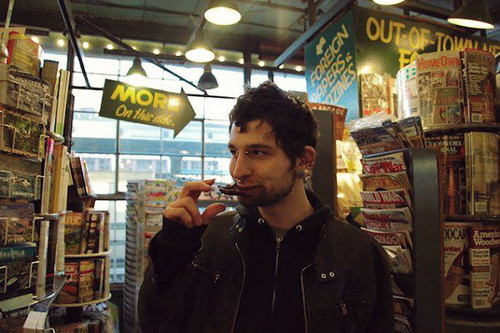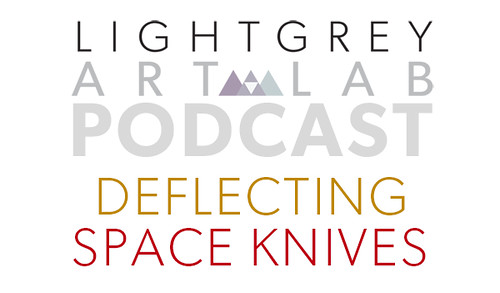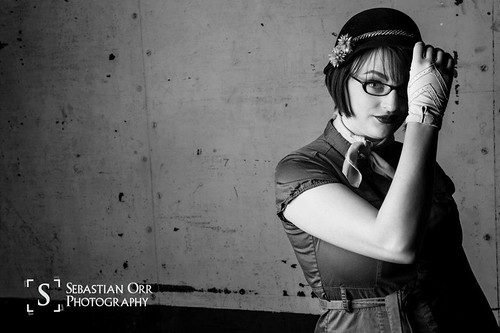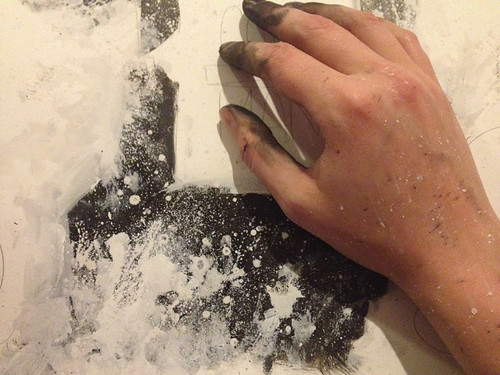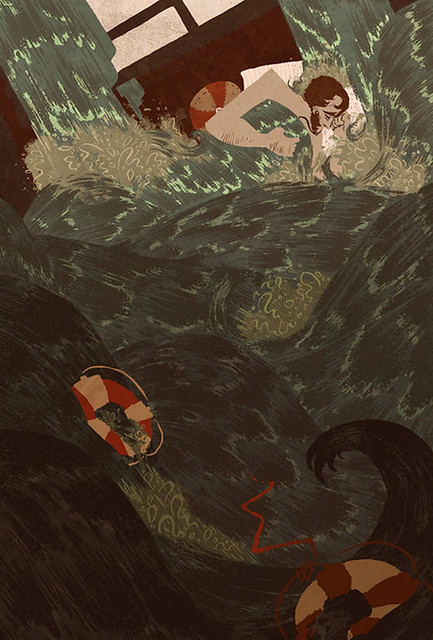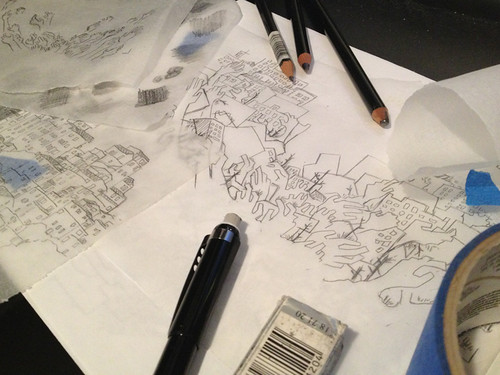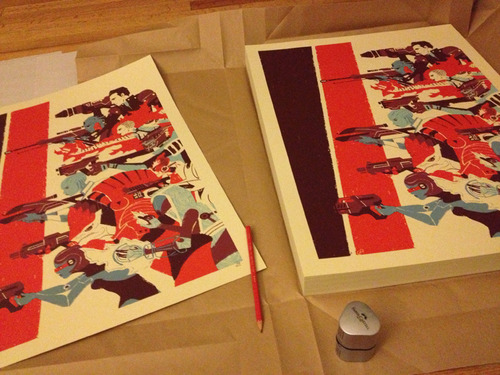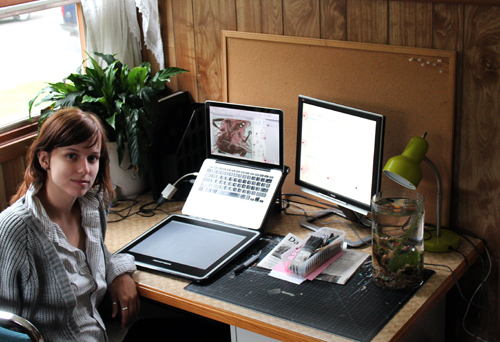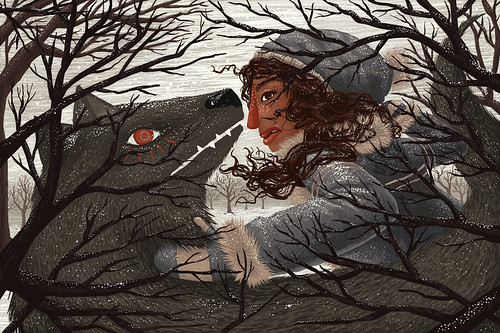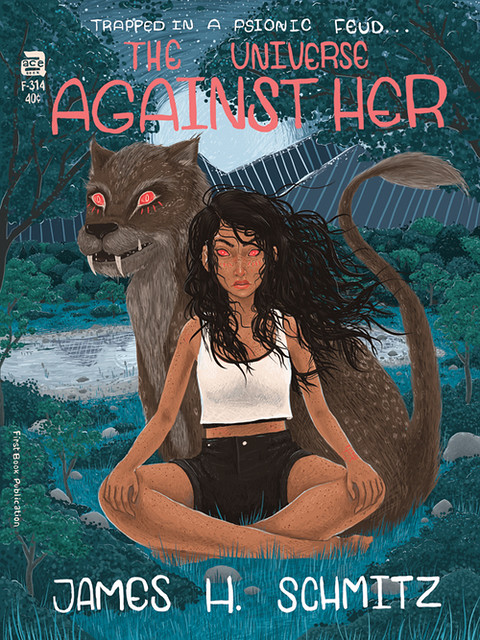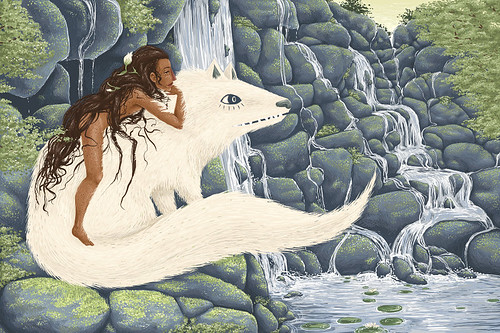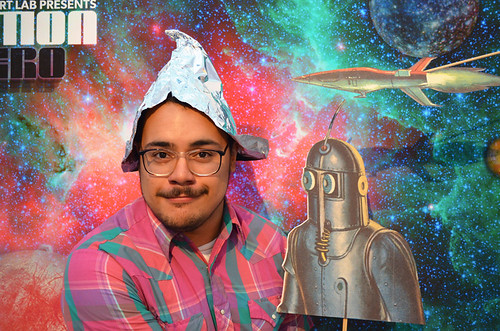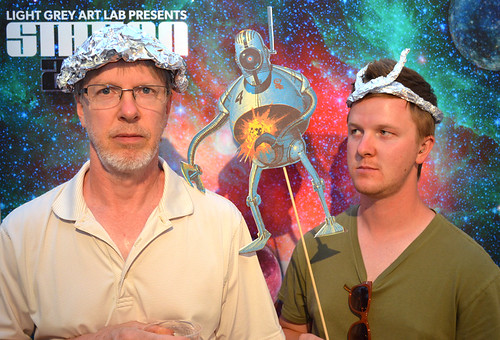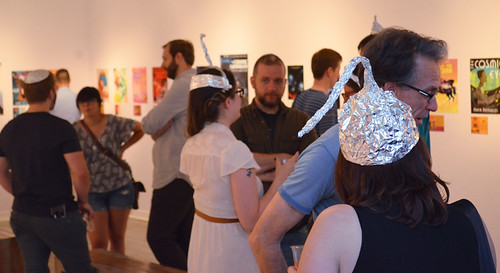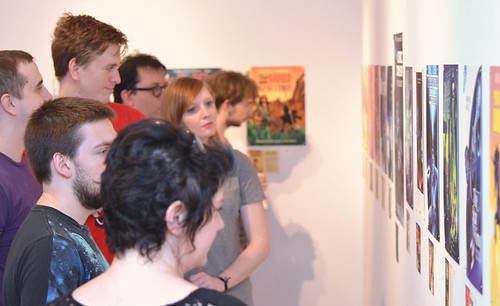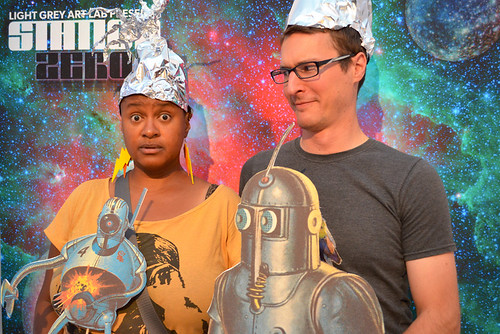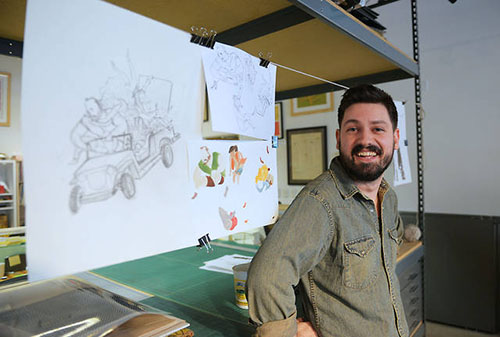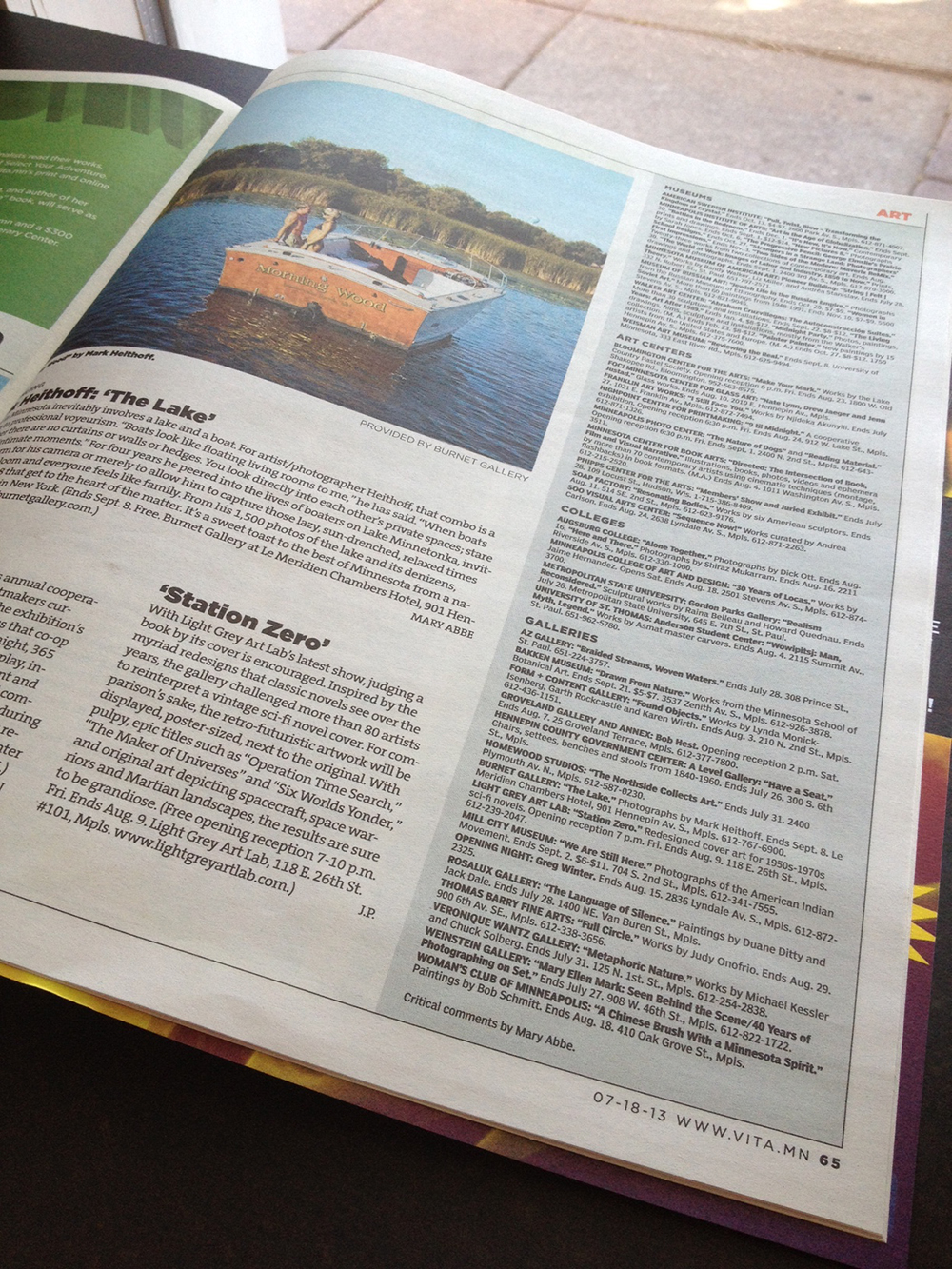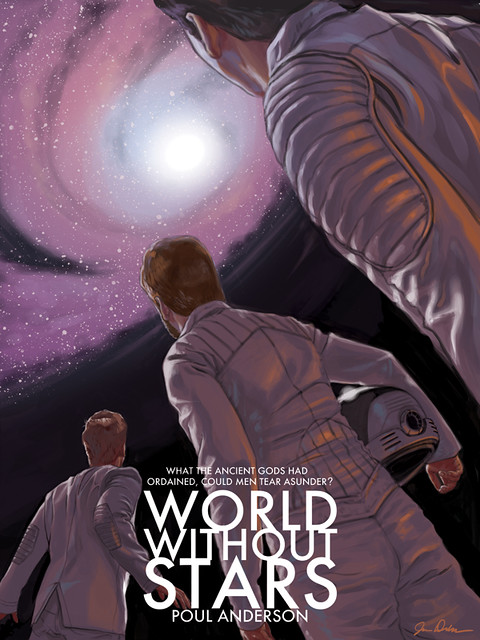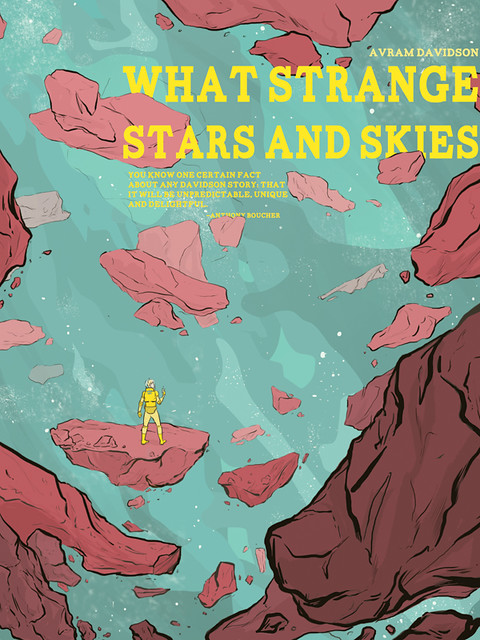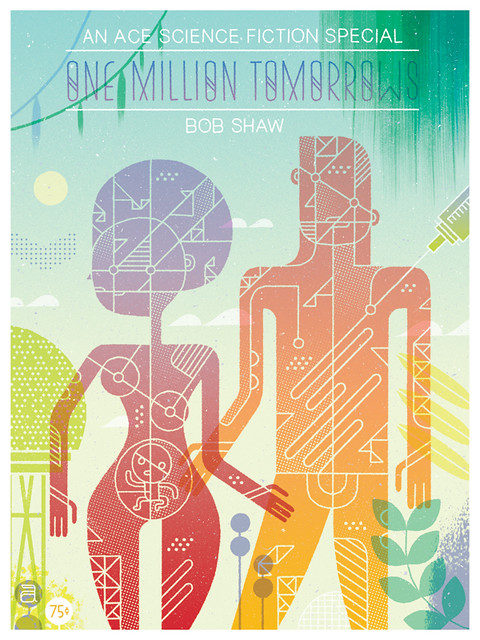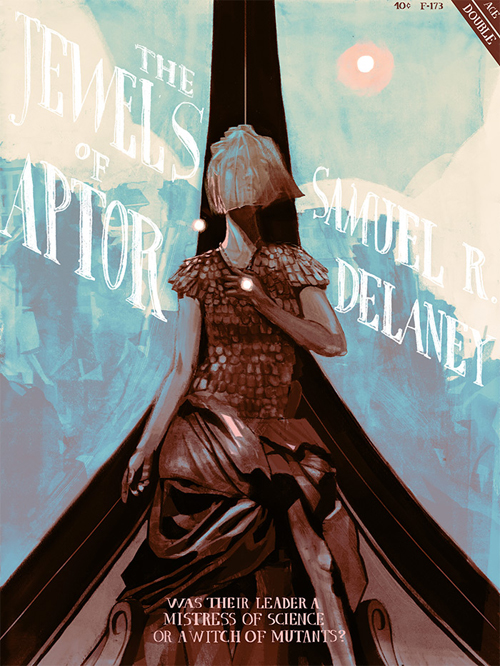
As the Station Zero show comes to a close, we wanted to take one last opportunity to speak to participating artist John Lee. John Lee is an incredibly talented illustrator, with clients that include National Geographic, FedEx, Harmonix, and The National Park Service. We wanted to ask John about his influences, experiences and process behind his gorgeous and expressive work. And of course we couldn't help talking about his favorite aspects of Science Fiction.
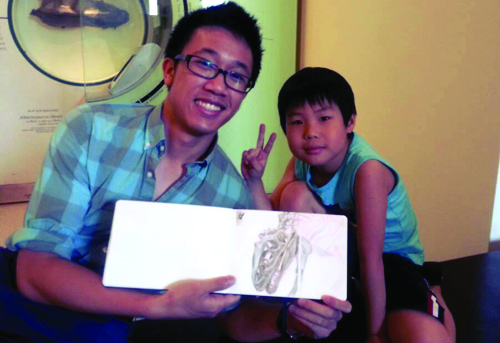
Hi John! I know you're not local to Light Grey Art Lab, so where are you from? Where'd you grow up and do you think your surroundings playing a large role in your career as an artist?
I grew up in Memphis, TN and am absolutely influenced by the South. My childhood was spent playing war in the Memphis summer evenings, surrounded by fireflies and honeysuckle, watching kung-fu movies after eating home-made fried chicken at family gatherings, and drawing spaceships on x-ray backing boards with fruit-scented markers.
I always drew a lot as a kid, and my parents picked up on that at an early age. They exposed me to a lot of Caldecott award winning children's books, comics like Calvin & Hobbes, and traditional Chinese art collected by my grandparents or family friends. I also remember trying to duplicate the visuals from the video games that my brother and I would play (since we could only play a certain amount every week).
Currently, I find myself thinking a lot about the South in terms of my specific racial experiences within it when I was growing up. Memphis is a city with a deep and complex history when it comes to race relations-- after all, it's the city where Martin Luther King Jr. was murdered, and where rock was born from the blending of black and white musical traditions. However, I'm a 2.5 generation Chinese/Filipino, and there weren't a lot of kids who looked like me in school. There also wasn't really a place for Asian-Americans to fit into the larger common narrative of black/white racial history in the South, even if they were just as affected by prejudice as any other group. Recently, I've been doing a lot of research through museums and first hand accounts of family members, trying to piece together just how complex this history is.
I guess what I mean to say is that I think artists should reflect the times in which they live. And I think as illustrators, it's always best to inform your work, not just stylistically, but through content, with personal stories and experiences. You hear this idea tossed around as finding visual distinction through one's illustration "voice." Right now I'm mining my own formative experiences for -- something. Somewhere in this weird intersection of X-Men comics, Super Metroid, Han-dynasty guardian lions, dogwood trees, cicada broods, and schoolyard scraps, there's a story to be told that is currently influencing my trajectory as an artist.
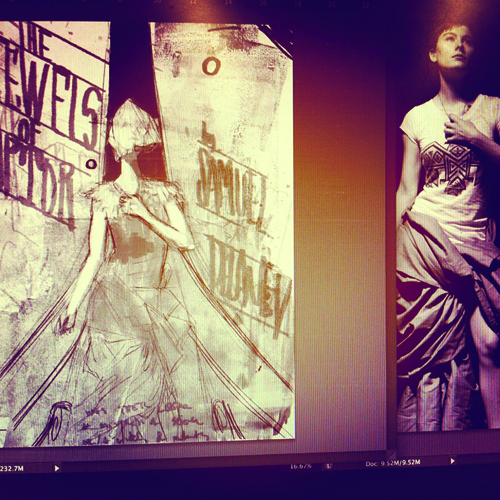
In process work by John Lee
I see you're an instructor at the Memphis College of Art! What attracts you to teaching?
I actually just quit teaching at MCA this summer, so my website is a little out of date--which I apologize for! I had the privilege of teaching there for 2 years, and taught foundational level courses for illustration (composition and color), as well as a senior-level portfolio development and professional practice course.
I think what I love the most about teaching is that I get to share. You can sit in your studio and just absolutely geek out about a color temperature shift in a Winslow Homer piece, and then bring it into the classroom where everyone not only gets it, but is just as excited about it as you are. This idea of being unapologetically ecstatic about things that you love is essential for leading a creative lifestyle. It's also the lynchpin that binds the illustration community together, and why I feel like illustrators are some of the nicest people out there.
Additionally, for me teaching is one way to pay it forward. I remember when I was first starting out as an illustrator, I was fresh out of school with a tangential degree and nothing but a barely functional ability to draw. I was referred to Nathan Fox, who was living in Kansas City at the time, and I dropped him a line for lack of any other options really. Nathan was really awesome, invited me over to his studio, and essentially got me set up. He did a review of the work that I had cobbled together as a "portfolio", showed me how he interacted with clients, and even went so far as to give me some of the documents that he used to for invoicing and contracts. It was the crash course that got me started, and I owe a lot to him because of it.
So when I would interact with students, I would try and keep that experience in mind. What did I want to know at that stage in the game? What did I need to know? Every student's path and style of learning is different, and my knowledge base is only so deep, so I definitely felt like I had varying degrees of success as a teacher. But at the end of the day, I wanted to feel like I helped someone towards their larger goal in some small way. Because everyone deserves that chance, and maybe one day they'll pay it forward to someone else.

Typography process for Station Zero by John Lee
That seems like a really wonderful and generous approach. So if you could give one word of advice to anyone who's just starting out, trying to be a successful freelance artist, what would it be?
My very first piece of advice would be to be careful on whose advice you internalize. Know the context in which people's experiences are formed. In my case, I still consider myself a journeyman illustrator in a lot of ways, and that I still have a lot to learn and a ways to go in terms of my career.
My second piece of advice for students and artists just starting out would be to reevaluate what your definition of success is. Decide what your goals are within art, or illustration, or whatever, and use that as your true north for every decision that you make here on out. Maybe you want a Ferrari one day. Maybe you want to write a children's book that changes how a whole generation thinks about storytelling. Maybe you want to settle down and have a few kids.
Whatever it is, be honest about what you want and then go for it with all of your being. I think about an awesome interview with Bruce Lee that I heard: "When you want to move, you're moving, and when you move, you are determined to move. (If) I'm going to punch, man I'm going to do it."
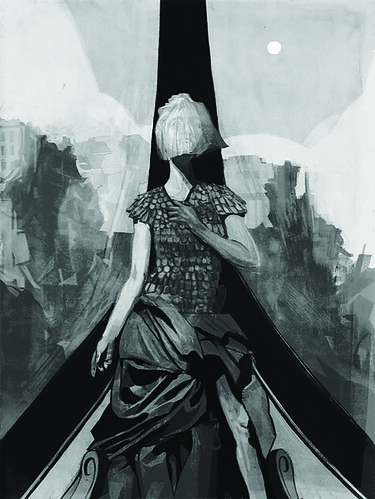
Process for Station Zero Show by John Lee
From looking at your work it seems like you like to draw everything under the sun! Is there any one subject that you like drawing the most and why?
For a while, I was really into drawing little feral Mononoke-hime-like kids. I like to draw foliage, and also rocks because I'm boring. I've also been drawing little cartoon sheep since I was in 4th grade, and I use them currently for my "branding." But mostly, I just like drawing people. And I don't really mean figure drawing in the academic sense. Honestly, anatomy, muscle groups, etc. kind of bores me to death. I mean drawing people in a way that captures some kind of honest expression or story. I think Harvey Dunn said to his students something along the lines of "if you want to paint the people, you must become one of the people." Sterling Hundley put it another way in a critique at the Illustration Academy when he said "the great unwashed masses are us." So, I really like just going out in different situations and drawing people as much as I can.
You post on your blog a lot of images of you doing observational drawings in your sketchbook at museums and other inspiring places. What about drawing from real life do you enjoy most, and what is your favorite environment to make art?
For me, drawing is much more effective at capturing an experience than say, photography. When I look at a drawing that I've done, I can remember where I was, who I was with, whether the sun was on my face, or it was windy at the time. etc. It's probably a byproduct of having to invest a lot of time and concentration into making a drawing, as compared to simply clicking a button. Drawing is more personal, and becomes more than just reproducing what's in front of you. You have to constantly edit information, accentuating some things while downplaying others.
On a more technical note, drawing from observation allows you to perceive form, value, and color more precisely than from a photograph. These repetitions build muscle memory and strengthen your perceptual vocabulary, which you can then use back in the studio.
My favorite situation for drawing is when it starts a dialog. So like when I'm drawing, and someone who is into it comes says hi, and a conversation starts. I guess it goes back to that idea of liking things unapologetically.
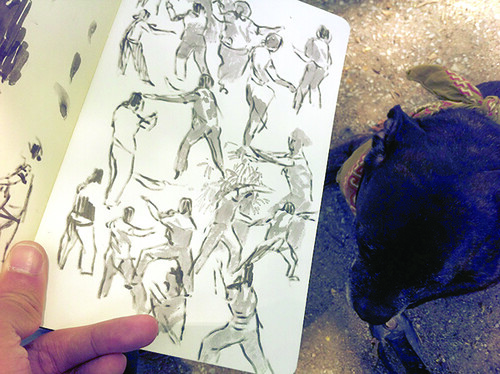
Sketches by John Lee
What is your process like, and what materials do you typically use?
My current illustration process is in a lot of flux as I'm figuring things out currently. But in general, my finals are either some kind of linework with digital color, or messy digital paintings that are collaged together from scanned bits and scraps of all sorts of things like monotypes, palette paper scraps, blotting sheets, etc. On the digital side, I use an older 09 Macbook Pro, Wacom Intuos 4, PS CS6, and a Canoscan LiDE 600F scanner.
I'm a drawer first and foremost, so all of my painting sensibilities tend to emerge from that. For instance, I have a tiny Winsor & Newton watercolor set that I have for sketching, but most of the heavy lifting is done with Caran d'Ache Supracolor watercolor pencils. I use Nasutomo Niji water brushes, one with water and one with 60/40 ink and water, a technique I stole from James Gurney. But again, I really like them because they kind of remind me of scummy Chinese calligraphy pens. I also use a little Zebra ballpoint pen for drawing when I don't have anything else, because of James Jean.
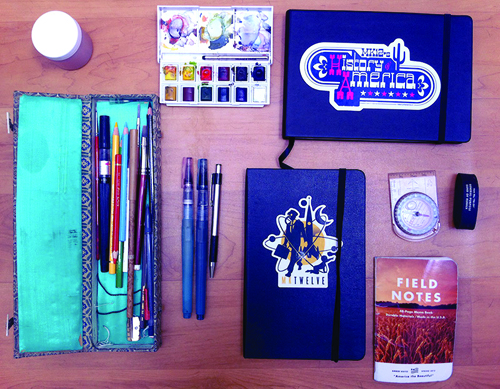
John Lee's art making materials
Most your work has an amazing rough quality to it, but is still very recognizable and controlled, with beautifully harmonious color combinations. What are your biggest influences that have helped created you as an artist and how have they helped mold your style into what it is today?
I think in general, I don't like having absolute control over my imagery. I want things to surprise me and my drawing to have elements of tightness and looseness, all within the same image (which is funny considering I work mostly digitally). I love when you're looking at a John Singer Sargent painting, looking at all these chunky daubs of murky browns and blues, and then suddenly this beautiful portrait emerges from it. I love the idea behind Cezanne's paintings where you're giving just enough information and then your brain has to reconstruct the rest.
Absolute representation is already known. We know what something looks like when it's realistic. Where's the fun in that? I tend to focus much more heavily on composition and design than the actual rendering of things.
In terms of color, I heard it explained this way (by Jeffery Alan Love, again at the Illustration Academy): "There are those that have to sneak up on color, and there are those that explode it." My grasp on actual painting color theory is tenuous at best, so I tend to sneak up and "find" my color schemes halfway through my pieces. However, the undergrad printmaker in me comes out at certain times and says "if it's red, make it freaking' red" so that's why you'll see some pretty garish saturated colors in my drawings. I think it's important to be honest about your influences. It's terrible when people won't admit being influenced by someone, even when it's really obvious. I think it's also important to look at who your influences were influenced by. I look at and absolutely love a lot of work, but I find myself only really going back and looking at certain people. Chronologically, it goes something like: John Singer Sargent, Howard Pyle/Harvey Dunn/Dean Cornwell, Charley Harper, Coby Whitmore, James Gurney, Gary Kelley, Sterling Hundley, James Jean. Obviously, the more contemporary your influences are, the more dangerous it becomes.
Graduating with a BFA in Creative Writing, I'm sure you have a list of favorite books. What are some of them and if you read sci-fi novels what are some of your favorite of those as well?
My favorite book is One Hundred Years of Solitude by Gabriel Garcia Marquez. I don't know if it's not cool to like that book, or whatever, but man. I love the scale of that book, the weaving narratives, and beautiful matter-of-fact vignettes of the supernatural. Italo Calvino's Cosmicomics is on that list for much the same reason. And as a Southerner, I love Flannery O' Connor's A Good Man is Hard to Find. I actually don't read a whole lot of sci-fi! I think the last one I read before The Jewels of Aptor was A Canticle for Leibowitz, by Walter M. Miller. I get most of my sci-fi dosage from other media. So like, Battlestar Galactica, or the original Ghost in the Shell and Appleseed comics by Masamune Shirow, or incompetently dropping marines off to their deaths in an occasional game of Starcraft.
What about Sci-fi intrigues you, and how did that influence your approach to your cover?
My absolute favorite thing about science fiction is that it stretches our imaginations. How many scientists, programmers, physicists, etc. discovered their passion by watching something like Star Trek or Star Wars as a kid? I also love science fiction when it can make an otherwise fantastic situation feel emotionally real. A series like Battlestar Galactica does that really well-- it forces us to engage with the story in terms that we can all relate to. For my cover, I chose to show one of the main characters, the White Goddess Argo, as the figurehead on the bow of an old frigate. The Jewels of Aptor is a post-apocalyptic story, so there's been a tech reset for the surviving humans/mutants and they use old sailing technology to get around. The true identity of Argo is constantly in question throughout the entire story, so I wanted her to feel kind of ambiguous as to whether she was actually a carved figurehead, or if there was some actual life behind her. I also wanted to use the heavy drapery to tie her back to a previous period in art history, to suggest that the world that the book is describing is actually one that we know very well.
Thanks again to John for taking the time to chat with us! You can find more from John Lee on his website, on tumblr and on twitter @johnleedraws.

